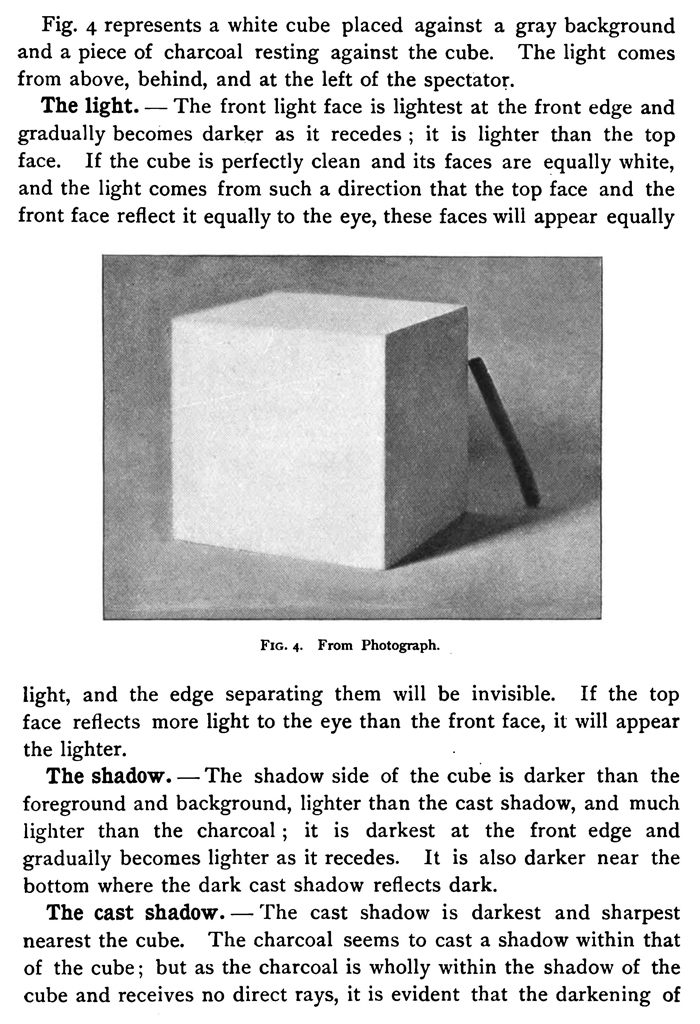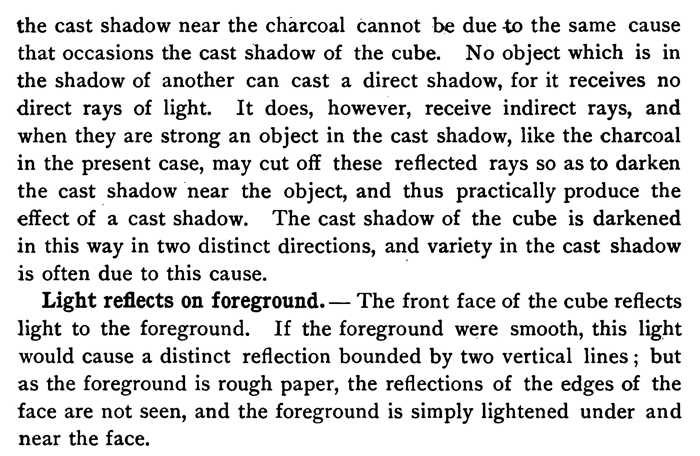Home >Directory of Drawing Lessons > Drawing Objects & Things > Geometric Shapes > Cubes > How to Draw and Shade Cubes & Boxes
DRAWING & SHADING CUBES & BOXES : How to Draw Lights and Shade Shadows of Cubes
|
|
The Text Above is Actually in Image Format, to Copy any Text, You Can Do So Below. Thanks. THE CUBE.Generally three faces of the cube are in light and three in shadow, and six edges separate light from shadow and form the dividing line of light and shade. Fig. 4 represents a white cube placed against a gray background and a piece of charcoal resting against the cube. The light comes from above, behind, and at the left of the spectator. The light. The front light face is lightest at the front edge and gradually becomes darker as it recedes ; it is lighter than the top face. If the cube is perfectly clean and its faces are equally white, and the light comes from such a direction that the top face and the front face reflect it equally to the eye, these faces will appear equally
light, and the edge separating them will be invisible. If the top face reflects more light to the eye than the front face, it will appear the lighter. The cast shadow.The cast shadow is darkest and sharpest nearest the cube. The charcoal seems to cast a shadow within that of the cube ; but as the charcoal is wholly within the shadow of the cube and receives no direct rays, it is evident that the darkening of the cast shadow near the charcoal cannot be due to the same cause that occasions the cast shadow of the cube. No object which is in the shadow of another can cast a direct shadow, for it receives no direct rays of light. It does, however, receive indirect rays, and when they are strong an object in the cast shadow, like the charcoal in the present case, may cut off these reflected rays so as to darken the cast shadow near the object, and thus practically produce the effect of a cast shadow. The cast shadow of the cube is darkened in this way in two distinct directions, and variety in the cast shadow is often due to this cause.
|
Privacy Policy ..... Contact Us







